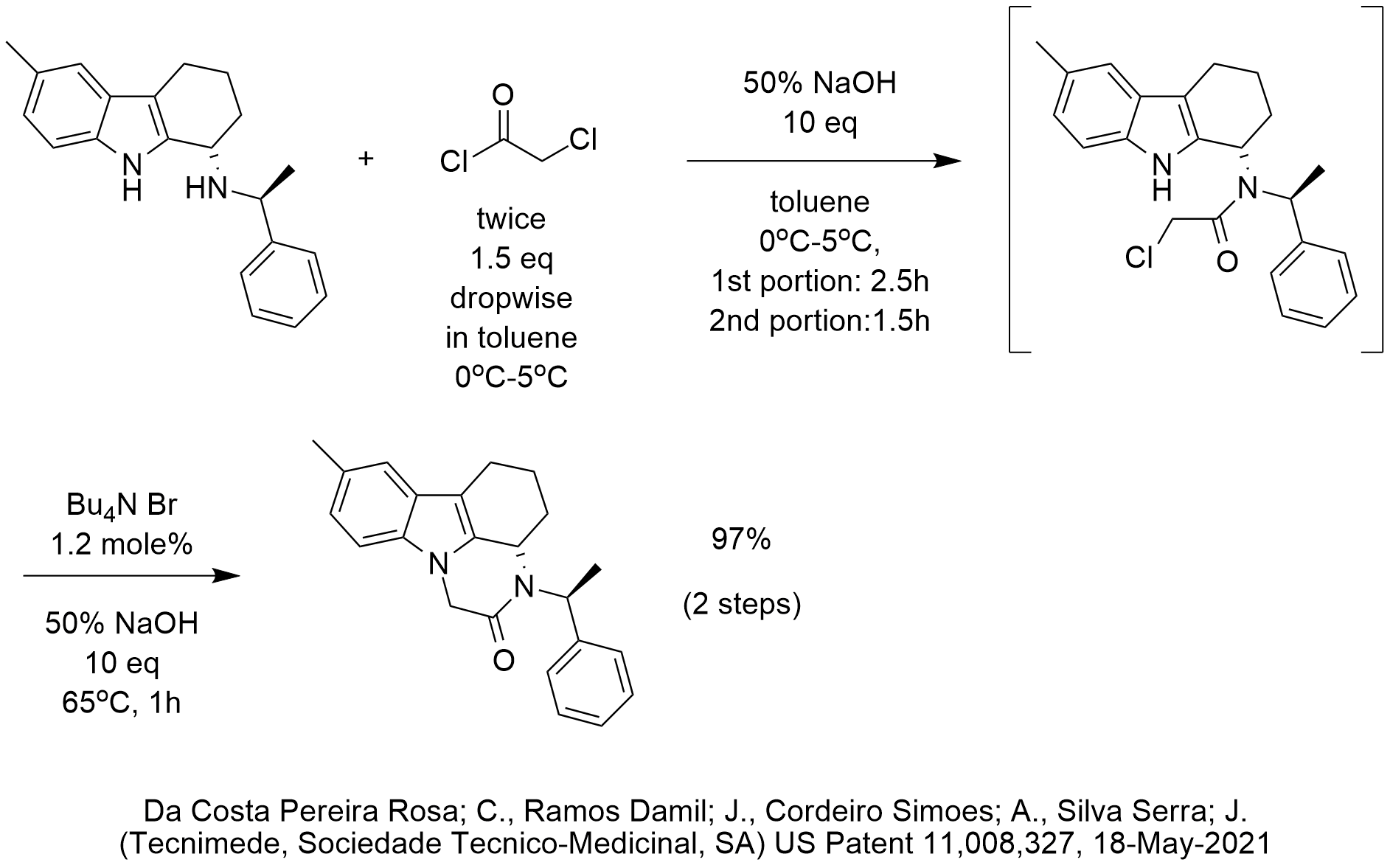The reaction sequence shown starts with an N-acylation followed by a PTC N-alkylation. There are obvious reactivity and thermodynamic differences between the N-H of the secondary amine and the N-H of the carbazole. It is reasonable to assume that these differences are responsible for the inventors choosing to add TBAB only for the second N-substitution.
The pKa of the N-H of the secondary N-H (to form the N-anion) is in the low 40’s whereas the pKa of the carbazole N-H (to form the N-anion) is in the mid-teens. The nucleophilicity of the neutral N-H of the secondary amine is higher than the nucleophilicity of the N-H of the neutral carbazole. The nucleophilicity of the N-anion from the deprotonated carbazole is higher than the neutral N-H’s.
This combination of pKa’s and nucleophilicities means that the secondary amine will likely react as the neutral nitrogen whereas the carbazole nitrogen will likely react as the N-anion in the presence of base.
In the absence of a phase-transfer catalyst, the secondary amine undergoes N-acylation with chloromethyl acetyl chloride and the NaOH serves to neutralize the HCl that is liberated. Once N-acylation is complete, the phase-transfer catalyst is added together with additional NaOH and then it is likely that the N-anion of carbazole is paired with the PTC quat cation and the chloromethyl group is N-alkylated for the cyclization.
It would be interesting to learn if the phase-transfer catalyst would promote N-acylation at the carbazole nitrogen if the TBAB was present for the first reaction. That would give the undesired reaction.
It is somewhat surprising that 10 equivalents of 50% NaOH were used in the initial N-acylation. The large excess of the “strongly hydrolyzing” 50% NaOH may be the reason that 3 equivalents of chloromethyl acetyl chloride was added dropwise in two portions. It is speculated that the acyl chloride is protected to some degree by the solvent (toluene) from hydrolysis by the strongly hydrolzying 50% NaOH. This is also consistent with the low temperature close to 0 C. We also speculate that over-agitation was avoided to minimize interfacial hydrolysis.
Regardless of all speculations, the reality is that the yield over two steps was 97%. So, even though the excess NaOH may need to be optimized in order to minimize the wasteful over-consumption of chloromethyl acetyl chloride, the reaction can be performed with efficient use of the more specialized starting material. Since phase-transfer catalysis excels in N-alkylations, it is not surprising that PTC was chosen for the second reaction.
Given the pKa of the carbazole in the teens, then according to the Halpern pKa guidelines for evaluation and optimization of PTC applications, we would have screened methyl tributyl ammonium as one of the phase-transfer catalysts for this N-alkylation.
If you want to learn how to choose PTC reaction conditions like an expert, especially for PTC strong based reactions, now contact Marc Halpern of PTC Organics to inquire about conducting the course “Industrial Phase-Transfer Catalysis” at your company.


